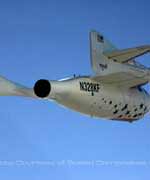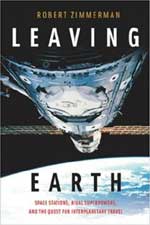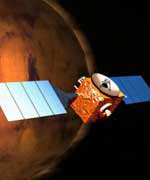The NASA Institute for Advanced Concepts (NIAC) has announced its 2004 Phase 1 awards. Twelve proposals to boldly go beyond the frontiers of space exploration were selected for a six-month study period beginning in October 2004.
The NIAC was created in 1998 to solicit revolutionary concepts from people and organizations outside the agency that could greatly advance NASA’s missions. The proposals push the limits of known science and technology. The proposals are expected to take at least a decade to be fully realized. NIAC’s intention is to discover ideas that may result in beneficial changes to NASA’s long-range plans.
“We are thrilled to team up with imaginative people from industry and universities to discover innovative systems that meet the tremendous challenge of space exploration and development,” said Dr. Robert Cassanova of the Universities Space Research Organization (USRA), and NIAC director. The USRA runs the Institute for NASA.
The NIAC sponsors research in two phases. Proposals selected for Phase 1 awards typically receive up to $75,000 for a six-month study that validates the viability of the concept and identifies challenges that must be overcome to make the proposal a reality.
The results of the Phase 1 studies are evaluated. The most promising are selected for further research into the major feasibility issues associated with cost, performance, development time, and technology through a Phase 2 award. Phase 2 studies can be up to two years long and receive as much as $400,000.
Proposals selected for the 2004 Phase 1 awards:
? A Deep-Field Infrared Observatory near the Lunar Pole (Principal Investigator (PI): Dr. Roger J. Angel, University of Arizona, Tucson, Ariz.)
? Extremely Large Swarm Array of Picosats for Microwave/RF Earth Sensing, Radiometry, and Mapping (PI: Ivan Bekey, Bekey Designs Inc., Annandale, Va.)
? Redesigning Living Organisms to Survive on Mars (PI: Dr. Wendy F. Boss, North Carolina State University, Raleigh, N.C.)
? Analysis of a Lunar Base Electrostatic Radiation Shield Concept (PI: Dr. Charles R. Buhler, ASRC Aerospace Corporation, Kennedy Space Center, Fla.)
? New Worlds Imager (PI: Dr. Webster Cash, University of Colorado, Boulder, Colo.)
? Efficient Direct Conversion of Sunlight to Coherent Light at High Average Power in Space (PI: Dr. Richard Fork, University of Alabama, Huntsville, Ala.)
? Use of Superconducting Magnet Technology for Astronaut Radiation Protection (PI: Dr. Jeffrey Hoffman, Massachusetts Institute of Technology, Boston)
? Wide-Bandwidth Deep-Space Quantum Communications (PI: Ricky Morgan, Morgan Optics Corporation, San Diego)
? Lunar Space Elevators for Cislunar Space Development (PI: Jerome Pearson, Star Technology and Research, Inc., Mount Pleasant, S.C.)
? Large-Product General-Purpose Design and Manufacturing Using Nanoscale Modules (PI: Chris Phoenix, Center for Responsible Nanotechnology, Brooklyn, N.Y.)
? Magnetized Beamed Plasma Propulsion (PI: Dr. Robert M. Winglee of the University of Washington, Seattle)
? A Self-Sustaining, Boundary-Layer-Adapted System for Terrain Exploration and Environmental Sampling (PI: Dr. Craig A. Woolsey, Virginia Polytechnic Institute and State University, Blacksburg, Va.)
Original Source: NASA News Release




